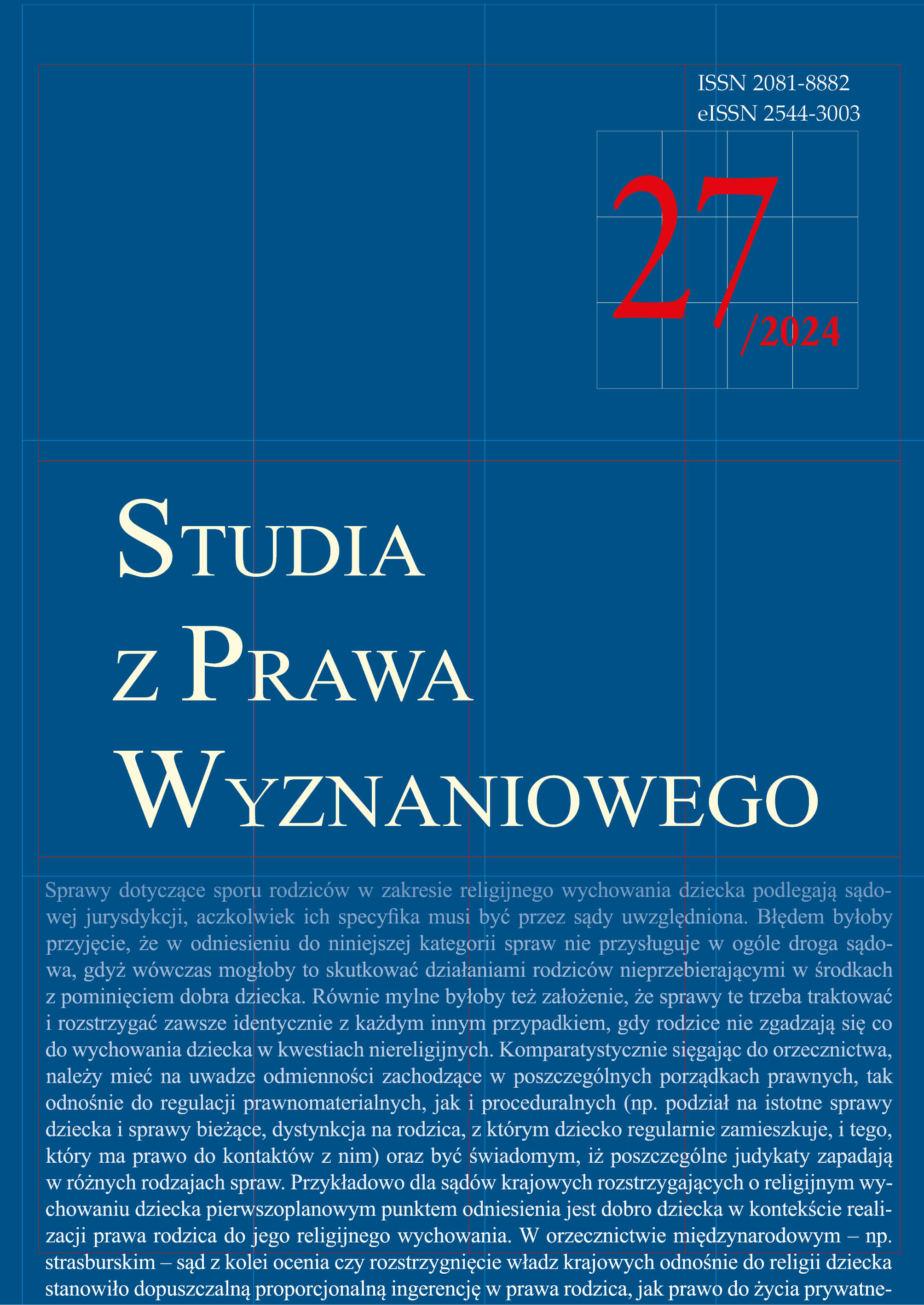„Państwo kościelne” – próba konceptualizacji
“Ecclesiastical State”: An attempt at conceptualization
Author(s): Wojciech Jakubowski, Marek JabłonowskiSubject(s): Law, Constitution, Jurisprudence, History of Law, Constitutional Law, Canon Law / Church Law
Published by: Katolicki Uniwersytet Lubelski Jana Pawła II
Keywords: Teokracja; Stolica Apostolska; Zakon Krzyżacki; Theocracy; hierocracy; ecclesiastical state; Holy See;
Summary/Abstract: The aim of this article is to fill the gap in the literature by conducting an overall reflection on the status of ecclesiastical states to understand the role and importance of such states in the universal history of political systems and the usefulness of the “ecclesiastical state” as an analytical category. The retrospective analysis method was used to trace the process of their formation and the acquisition of public law functions. An original typology was proposed, taking into account teleological and political administrative criteria. Ecclesiastical states in both broad and narrow senses were distinguished. A contemporary example is the Vatican City State, which is the smallest “ministate” in the world in terms of area and the most modest in terms of population. It administers the extraterritorial properties of the Holy See, the total area of which exceeds the area of the state itself. It is not governed by ecclesiastical and secular authorities, but they administer it in the name of and within the limits set by the sovereign – the Holy See. Its relations with the Holy See have the character of a functional union of a unique nature. The Vatican City State also retains a Fundamental Law that, in combination with the Lateran Treaty and organic laws, creates a coherent political foundation of the state. Moreover, it is an elective, theocratic-hierocratic absolute monarchy of a patrimonial nature.
Journal: Studia z Prawa Wyznaniowego
- Issue Year: 2024
- Issue No: 27
- Page Range: 165-186
- Page Count: 22
- Language: Polish

